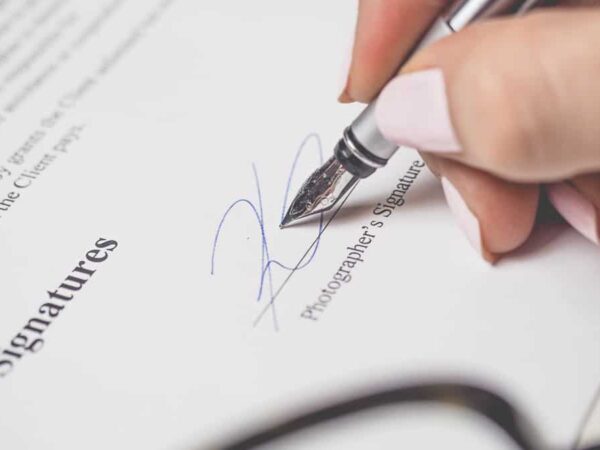Protect Your Intellectual Property
Intellectual property rights ensure you’ll benefit from the works you created. Here are 3 ways to protect intellectual property in the U.S.

As a business owner, you make sure to lock up your office when you leave, you keep valuable merchandise secure, and you have the only key to the safe. But have you given any thought to protecting your intellectual property? Are you even sure of what that is and how it may apply to your business? Let’s take a look.
What Is Intellectual Property?
We’re all familiar with the concept of property. It’s a possession or something you own. It’s easy to think about in terms of physical property like a car or a piece of jewelry, but there is also a class of property for things created by the mind. Things like works of art, music, designs, inventions, and names and images like your company name and logo. These are known as intellectual property, and you have a right to protect them, as well.
Intellectual property rights allow you to benefit from the time and effort you put into creating your works, and they prevent you from taking advantage of someone else’s without compensating them for it. This encourages continued creation, invention, and innovation.
How to Protect Your Intellectual Property
There are three ways to protect intellectual property in the United States: patents, trademarks and copyrights. Each is designed to cover different types of property.
Patent
A patent is awarded to protect an invention as a piece of intellectual property. An invention could mean a product, a process that offers a new way of doing things, or a new technical solution to a problem. A patent lasts for twenty years and gives you the right to prevent other people from using or copying your idea during that time.
Depending on what you’ve invented, there are three different kinds of patents you can apply for: utility, design, or plant. The U.S. Patent and Trademark Office (USPTO) describes the various subjects each would cover. Not everything can be patented, but with very few exceptions, all man-made inventions are covered.
To get a patent, the first step is to search all previously patented inventions to make sure you’re not applying for something someone else has already invented and patented. There are patent search agencies and attorneys that specialize in this, but if you want to do it on your own, your nearest Patent and Trademark Resource Center will be a big help.
If you don’t find a conflicting patent, the next step is to file an application with the U.S. Patent and Trademark Office, which will determine if your invention is, in fact, eligible. There are very specific guidelines for preparing the application and drawings that must be included, so again, you may want to get professional help with this.
The fee to apply is not refundable, and will vary based on what kind of patent you’re applying for and how large your business is. If a patent is granted, you will also have to pay to maintain it.
Trademark
A trademark is similar to a patent except, rather than processes and products, it protects words, names, symbols, sounds, and colors that differentiate goods and companies from each other. Servicemarks do the same for services. Trademarks and servicemarks are granted for ten-year periods, and they can be renewed forever as long as they’re being used.
What can you trademark? The unique name of a product or brand you’ve developed. Think Jell-O and Band-Aid. There are other gelatin desserts and adhesive bandages, but only Jell-O and Band-Aid can call themselves by these names. McDonald’s iconic golden arches are an example of a servicemark.
Trademarking your name, logo, slogans, and designs will help ensure that other businesses don’t use them (or close approximations) to confuse consumers into doing business with them. The more distinctive you can make the trademark, the easier it will be to enforce. Packaging can also be trademarked, which is certainly important to a major brand like Coca-Cola, with its signature green-tinted glass bottle, but it’s just as important for an up and coming entrepreneur who can’t afford to let someone else capitalize on his or her hard work.
Similar to patents, you should do a search to make sure no one else is already using the mark you’d like to register. The USPTO has a database you can search electronically before going ahead with your application.
You can apply for a federal trademark with an electronic form on the USPTO’s website. If it’s granted, there will be public notice that you’ve claimed ownership of the mark, and you’ll get the exclusive right to use it, along with several legal protections. If your application gets approved, you are allowed to use the “®” symbol that designates a registered trademark.
Interestingly, you don’t HAVE to register the mark with the government in order to get legal protection; you can establish some rights simply by using it. Experts caution that filing a lawsuit and proving trademark infringement is difficult and costly, though, so they recommend playing it safe and registering it. If you don’t register, you can use the “TM” (trademark) or “SM” (service mark) designation, which signals your claim of a “common-law” mark.
Copyrights
Copyrights protect original works of music, literature, and art, including films, books, songs, and even architecture, computer software, and websites.
Copyrights are registered by the Library of Congress. They protect the manner in which something is expressed rather than the subject matter. For example, while the lyrics to “I Left My Heart in San Francisco” could be copyrighted, that wouldn’t stop anyone else from writing a song about San Francisco. If you copyright a work, you hold the exclusive right to duplicate or change it, and to distribute, display, or perform the work in public.
Without doing anything, you have some copyright protection the moment you create something, but your ownership becomes documented when you register the copyright. This gives you a public record and a certificate of registration. You will also have to register if you want to bring a lawsuit against someone for illegally using work you have created.
To register, you can apply online through copyright.gov, but first, take a look at the tutorial the electronic copyright office put together to walk you through the process. Copyrights are inexpensive, ranging from $35 to $55. Copyright terms vary, but works created today will generally be protected for the life of the author plus an extra seventy years.
Trade Secrets
While not strictly intellectual property, your business may have other intangible assets that should also be protected. Ideas and concepts cannot be copyrighted, although you can get some protection for them through the trade secret law or confidentiality agreements that would prohibit someone from using or disclosing an idea they agreed to keep secret.
These could include customer and vendor lists, along with pricing and manufacturing information. To keep these trade secrets in house, you may want to consider having employees and companies you’re dealing with sign confidentiality and non-disclosure agreements.
International Considerations
Just because you have protected your intellectual property in the U.S., that doesn’t mean you’re covered everywhere. Intellectual property rights vary by country, and you need to apply separately to get coverage elsewhere in the world. Your business plan should help answer the question of whether you need to look into rights in other countries.
Learn More About Intellectual Property
The U.S. government has a lot of valuable and easily-accessible information on its STOPfakes.gov website, which was created by several agencies involved in the protection of intellectual property rights. A good place to start would be with the online module that gives you an overview of the subject of intellectual property. It will help you figure out what kind of protection you might need and how to go about getting it. There is a series of webinars, as well, for more in-depth information.
Learn More About Financial Education
When it comes to your finances, you want clear guidance and easy-to-implement tools based on your unique needs. Visit Learn with AOF to get started strengthening your financial management and meeting your goals.
Experience a different kind of financial education. Learn with AOF has flexible, on-demand courses developed by small business owners, for small business owners. Learn on your schedule, with no time commitment or limit. Save your progress any time to fit courses into your busy schedule.









